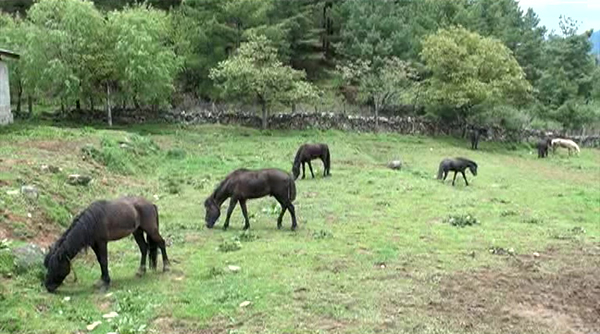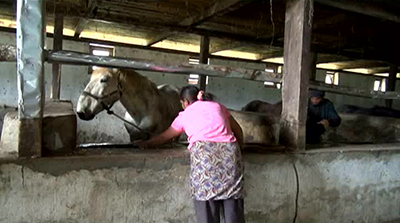 The number of horses in the country has been on a decreasing trend with more and more motor-able roads being built in the country over the years. Rearing horses for transportation is gradually becoming irrelevant in this day and age.
The number of horses in the country has been on a decreasing trend with more and more motor-able roads being built in the country over the years. Rearing horses for transportation is gradually becoming irrelevant in this day and age.
Horses can now be seen strayed in the wild and in urban areas as well. So, what does the future hold for the horse owners in the country now?
Except for few highland communities and for orange transportation in some places in the country, the tradition of rearing horses is slowly disappearing from the villages.
Statistics with the National Horse Breeding Farm in Bumthang show that with 27, 887 horses in the country in 2004, the figure has dropped to about 18, 890 in 2016.
People in Chhumig Gewog in Bumthang traditionally reared herd of horses to transport oranges in Gelephu during winter. But now, they don’t get much demand for horses from orange exporters.
“All the orchards are connected through farm roads now. In the past, we used to get demands from the exporters to transport oranges and cardamom on horses to Gelegphu,” said Tshering Wangchuk, Horse Owner in Chhumig.
The National Horse Breeding Farm is now working towards transforming the usage of horses from traditional load-carrying purpose towards more lucrative ones.
It says with increasing number of tourists visiting the country, the demand for horses for riding purposes will increase in the next decade or so.
“If we take India as an example, even in the face of development, there’s a huge demand for horses now. There are horses that cost Nu 300,000-700, 0000,” said Sonam, Manager of National Horse Breeding Farm, and added: “So, with changing times and changing mindset of people in the future, we believe the reverence and demand for horses will definitely be there like in the past”
The farm currently has more than 70 horses that are of 4 different breeds. It has also established two farmer’s group that raises local horse breed at Boomdeling in Trashi Yangtse and Tandigang in Bumthang.
However, limited pastureland for the horses in the farm and other human resource issues are affecting the proper functioning of the farm. The farm currently has about 50 acres of pastureland and 16 staff.
“The current pool of human resource is not sufficient to shoulder the national objective of conserving and developing horses. We don’t have experts to do research on quality of different breed of horses in the country,” continued the farm manager. But he said: “Our ministry has told we will be trained and provided with the necessary knowledge to carry out our duties.”
The farm is now working towards encouraging and promoting ecotourism through horse riding among other activities.











